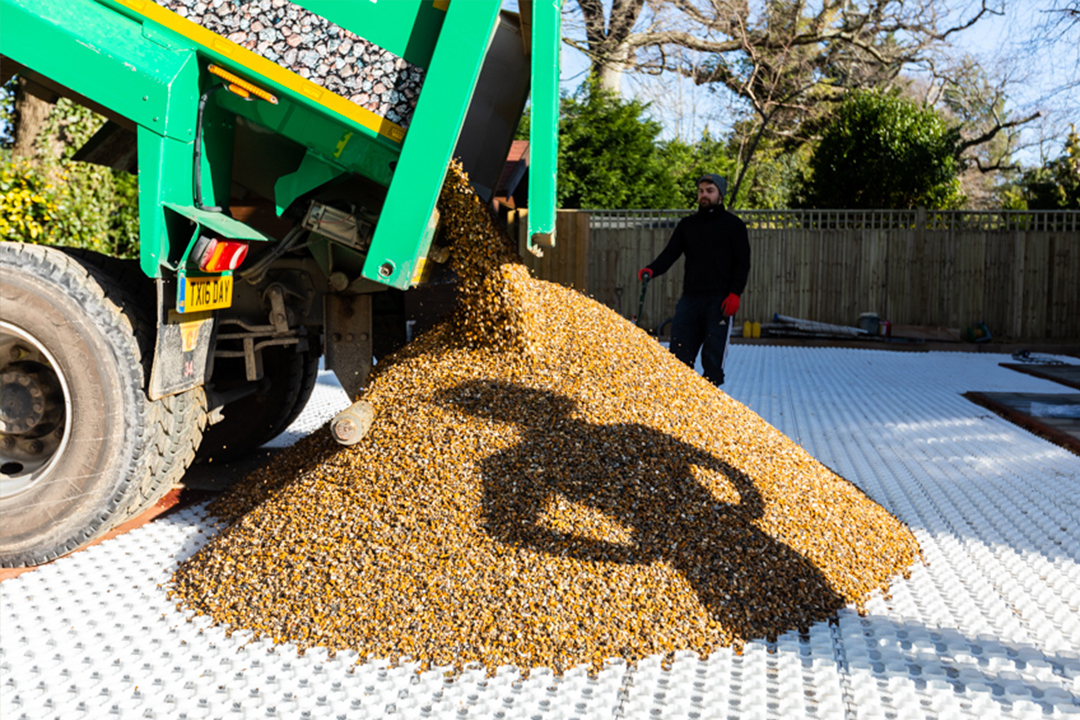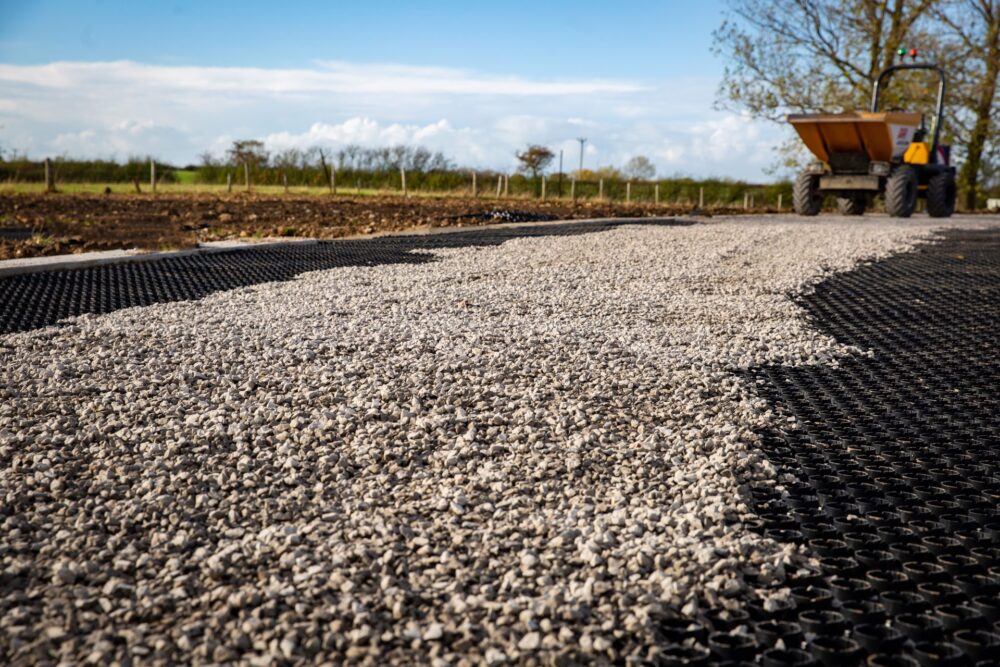Whether you’re a professional landscaping contractor with years in the trade or are entirely new to the process, laying a driveway is something that can’t be done well without prior planning. The task of calculating how much aggregate is needed for a gravel driveway isn’t always easy, but getting it right can be the difference between a job well done and a major headache. Overestimate, and you’ll either be left with surplus materials to store somewhere or dispose of somehow (and the cost of that), or an overfilled driveway that’s prone to major shifting and movement. Underestimate, and you’re simply creating more work for yourself down the line when you realise your mistake.
At Beauxfort, we’ve been experts in surface stability and landscaping for more than 20 years, and we’ve learned a thing or two about laying driveways that stand the test of time. Read on for our recommendation of what to consider before ordering gravel for your next project and how to quickly calculate the correct amount using our online gravel calculator.
Things To Consider When Buying Gravel For Your Driveway
Before starting on a driveway project, it’s essential to take into account the area’s landscape and the overall aesthetic you’re hoping to achieve. For example, while a sloped surface isn’t well suited to a traditional aggregate driveway (due to gravity causing the stones to migrate downhill), it may be possible by installing Gravelrings gravel grids. Or, while a particular aggregate may be aesthetically pleasing to a client, it may not be the right choice from a functionality standpoint. Understanding the landscape and the desired result is key to producing a durable and long-lasting gravel driveway.
Another consideration is what type of system you’ll use to lay the gravel. Traditionally, the laying of a driveway would begin with 150mm of an MOT Type 1 sub-base. Next, a 20mm aggregate would be laid over the top at an additional depth of at least 50-60mm. This allows the larger gravel to settle and bond to the smaller material, creating a sturdy surface. This method involves a greater amount of materials as well as the need to calculate two different aggregate types, adjusting their relative depths should the driveway be used for heavier vehicles.
All in all, it’s easy to see why the ‘traditional’ method of digging deep into the ground for multiple aggregates is a tiresome task for even the most experienced contractors. Thankfully, there is an alternative. With the Gravelrings low-profile gravel grid system, you can save time, effort and materials, all while enjoying an even better final result.
The Benefits Of A Gravel Grid System
Gravel grids are a fantastic option for laying a driveway and allow you to achieve a distinguished low-maintenance driveway while using much less gravel. At just 25mm deep, Gravelrings gravel grids have one of the lowest profiles of any gravel mat system on the market, offering significant savings on time and raw materials.
The concept of gravel grids isn’t new, but as landscape experts, we consistently found the quality to be lacking. Bulky and brittle or flimsy and fragile, none stood up to the high level of quality we demand; an efficient, durable, premium grid system for gravel driveways that reduces migration and patchy irregularities.
With its integral mesh base, the Gravelrings gravel retention system can be used to create driveways and paths with a load-bearing capacity in excess of 350 tonnes per square metre. The low 25mm profile is designed to be overfilled in order to obscure it completely from view and requires as little as one-tenth of the gravel needed for a traditionally laid driveway.
Not only does the unique design of the Gravelrings gravel retention system require a much smaller quantity of aggregate to fill, thereby saving on raw materials, but due to its shallow profile, less digging is required by the on-site team, which in turn equates to a saving on time and fuel, as well as lowered disposal costs.
Along with only requiring a fraction of traditional raw materials, gravel grids are made in the UK from eco-friendly recycled plastics, are permeable to encourage proper drainage and are interlocking, making them quick to lay.
How To Calculate How Much Gravel You Need
Once you’ve decided what system you’ll use to lay your driveway, it’s time to get calculating. The good news is that we’ve already done the heavy lifting for you.
Whether you’re using a gravel grid system or not, our gravel calculator can tell you how much your project will require and can even work out the cost based on price per cubic metre.
Simply enter the width and length of the driveway, along with the depth of aggregate you need for your project. The calculator will then determine the total area in m², the total volume in m³, and the weight of the aggregate in tonnes. And perhaps best of all, the calculator accepts both metric and imperial measurements, so there’s no need to convert between systems.
Achieve the perfect gravel driveway with the Beauxfort Gravelrings system. Check out www.beauxfort.com for more information on Beauxfort landscape systems, design inspiration, and request a free sample. You can talk to our team about your project by contacting us on 0330 055 2599 or info@beauxfort.com.



